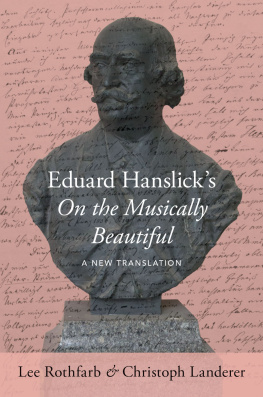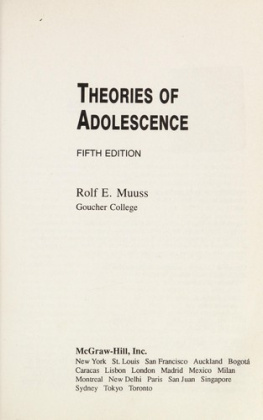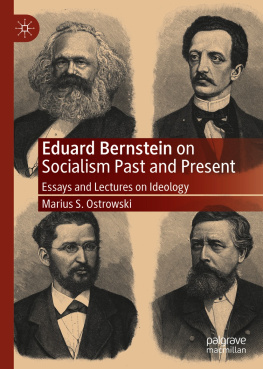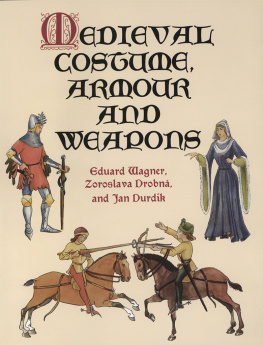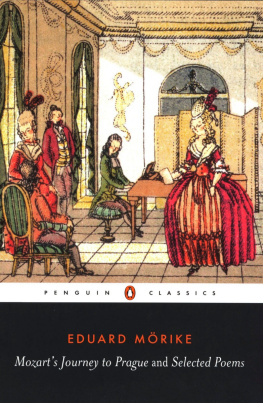Rothfarb Lee - Eduard Hanslicks on the Musically Beautiful
Here you can read online Rothfarb Lee - Eduard Hanslicks on the Musically Beautiful full text of the book (entire story) in english for free. Download pdf and epub, get meaning, cover and reviews about this ebook. year: 2018, publisher: Oxford University Press, Incorporated, genre: Children. Description of the work, (preface) as well as reviews are available. Best literature library LitArk.com created for fans of good reading and offers a wide selection of genres:
Romance novel
Science fiction
Adventure
Detective
Science
History
Home and family
Prose
Art
Politics
Computer
Non-fiction
Religion
Business
Children
Humor
Choose a favorite category and find really read worthwhile books. Enjoy immersion in the world of imagination, feel the emotions of the characters or learn something new for yourself, make an fascinating discovery.
- Book:Eduard Hanslicks on the Musically Beautiful
- Author:
- Publisher:Oxford University Press, Incorporated
- Genre:
- Year:2018
- Rating:5 / 5
- Favourites:Add to favourites
- Your mark:
- 100
- 1
- 2
- 3
- 4
- 5
Eduard Hanslicks on the Musically Beautiful: summary, description and annotation
We offer to read an annotation, description, summary or preface (depends on what the author of the book "Eduard Hanslicks on the Musically Beautiful" wrote himself). If you haven't found the necessary information about the book — write in the comments, we will try to find it.
Eduard Hanslicks on the Musically Beautiful — read online for free the complete book (whole text) full work
Below is the text of the book, divided by pages. System saving the place of the last page read, allows you to conveniently read the book "Eduard Hanslicks on the Musically Beautiful" online for free, without having to search again every time where you left off. Put a bookmark, and you can go to the page where you finished reading at any time.
Font size:
Interval:
Bookmark:


Oxford University Press is a department of the University of Oxford. It furthers the Universitys objective of excellence in research, scholarship, and education by publishing worldwide. Oxford is a registered trade mark of Oxford University Press in the UK and certain other countries.
Published in the United States of America by Oxford University Press
198 Madison Avenue, New York, NY 10016, United States of America.
Oxford University Press 2018
All rights reserved. No part of this publication may be reproduced, stored in a retrieval system, or transmitted, in any form or by any means, without the prior permission in writing of Oxford University Press, or as expressly permitted by law, by license, or under terms agreed with the appropriate reproduction rights organization. Inquiries concerning reproduction outside the scope of the above should be sent to the Rights Department, Oxford University Press, at the address above.
You must not circulate this work in any other form and you must impose this same condition on any acquirer.
CIP data is on file at the Library of Congress
ISBN 9780190698188
eISBN 9780190698201
This volume is published with the generous support of the Gustave Reese Endowment of the American Musicological Society, funded in part by the National Endowment for the Humanities and the Andrew W. Mellon Foundation.
Christoph Landerer, Alexander Wilfing, and Lee Rothfarb
Christoph Landerer and Lee Rothfarb
Christoph Landerer and Lee Rothfarb
Lee Rothfarb and Christoph Landerer
Eduard Hanslicks Vom Musikalisch-Schnen (first edition 1854) was translated into English twice, first by Gustav Cohen (The Beautiful in Music, 1891), then by Geoffrey Payzant (On the Musically Beautiful, 1986). Given the renewed, strong interest in Hanslicks ideas, as well as the increased demands of todays scholarly world compared with those of thirty years ago, we decided that a new translation of Hanslicks watershed treatise was necessary. We determined further that a new translation should be a collaboration between an English speaker and a native German speaker with different academic backgrounds, in musicology/music theory and aesthetics, as well as in intellectual history. Judged by the standards of mid-nineteenth-century academic writing in the German-speaking world, Hanslicks language is remarkably clear. Yet some of his vocabulary and the sentence structure of some of his arguments are not easy to comprehend. Our translation, written with the eyes and the expertise of both an English speaker and a native German speaker, aims to provide a new understanding of the text closer to the original than either of the existing translations.
There are, of course, different approaches to translation. Formal equivalence attempts to preserve the lexical and grammatical structure of the text, whereas functional equivalence strives to give a more natural, user-friendly rendering, though at the expense of lexical and grammatical details. The former approach yields a text more faithful to the original, the latter a more readable text, but less faithful to some of the characteristic features of the original. Because On the Musically Beautiful is both a philosophical treatise, based on philosophical and music-theoretical terminology, and a text aimed at a broader audience, including lay readers, translators of the treatise confront a dilemma. On the one hand, in many instances, a translation that captures the German linguistic characteristics of a passage may sound slightly awkward in English. A more liberal rendering, on the other hand, although enhancing readability, may lack source-language characteristics that are essential for understanding Hanslicks aesthetic theory as he conceived and verbalized it.
It is no surprise that the history of the Hanslick translation begins with a functional approach. Gustav Cohens 1891 translation is beautifully written, but also takes extensive liberties with the text. His translation of tnend bewegte Formen as sound and motion, for instance, omitting altogether the element of form, lucidly illustrates the shortcomings of this approach. Hanslick was, after all, considered a formalist. Payzant, in his translation of 1986, pays close attention to philosophical and music-theoretical detail, thereby enhancing our understanding of Hanslicks philosophical and music-theoretical point of view. However, in many ways Payzants translation is less readable than Cohens. The very title of the bookOn the Musically Beautifulcorrectly renders the German original, but is without doubt conceptually more demanding than Cohens The Beautiful in Music. Payzant translates the famous phrase tnend bewegte Formen as tonally moving forms, thus preserving the three-part structure that is central to the German construction. However, although we retain Payzants translation of the title, we argue for a different solution for this central statement. Here and in many other cases we find Payzants translation rather free and paraphrased, at times bordering on misinterpretation, at others crossing that border.
of music will violate a higher principle than that of mere proportion if a single bar, though in itself irreproachable, is out of keeping with the effect of the whole. Our translation corrects the passage to read as follows: A higher logic than that of mere proportionality, the style of a piece of music is violated by a single measure which, irreproachable in itself, does not accord with the expression of the whole (Chapter 4, p. 67; 10th ed., 12526: Eine hhere Gesetzlichkeit, als die der bloen Proportion, wird der Stil eines Tonstcks durch einen einzigen Takt verletzt, der, an sich untadelhaft, nicht zum Ausdruck des Ganzen stimmt).
Considering the texts many subtleties, some of them vital to Hanslicks argument and in light of the lively academic debate addressing these subtleties, todays readers of his treatise must rely on a translation that is sensitive to characteristics of the German text. With Cohens approach resulting, on the one hand, in a translation of high readability in English but at the expense of subtleties and key characteristics, and, on the other hand, with Payzants translation less readable than Cohens and with a fair number of inaccuracies, it is difficult to produce a new, improved translation that is as readable as Payzants and simultaneously faithful to Hanslicks intended arguments.
If readers find some of our solutions less graceful than Cohens and perhaps also less appealing than Payzants, it is because we find it impossible to pick up where they left off and at the same time provide what their translations lack. We generally avoid neutralized or transformative translation, which smooths out characteristic Germanic modes of expression and transforms them into idiomatic English ones. In adhering closely to German patterns of expression, our approach thus differs from that of both Cohen and Payzant. We have used such transformative translation only where it was unavoidable. Overall, we believe we have preserved the tone and characteristics of the German in readable English. Although we strive for optimal flow of the text, we also try to preserve its main characteristics, some of which sound a bit inelegant even in the original.
In addition to adopting a different approach to translation, we also base our work on the current state of research and facilitate readers access to the text by offering introductory essays that cover the central aspects of Hanslicks book and his thought. The first essay, Origins, Publication, and Translation History of the Treatise, informs readers about the genesis of Hanslicks book, about changes in the different editions, and about the history of its translations. The second essay, Introduction to Hanslicks Central Concepts, introduces readers to Hanslicks aesthetic thinking by explaining the theoretical concepts that constitute its core. The third essay, Philosophical Background, guides readers in historically situating the treatise in the realm of aesthetic and philosophical ideas.
Font size:
Interval:
Bookmark:
Similar books «Eduard Hanslicks on the Musically Beautiful»
Look at similar books to Eduard Hanslicks on the Musically Beautiful. We have selected literature similar in name and meaning in the hope of providing readers with more options to find new, interesting, not yet read works.
Discussion, reviews of the book Eduard Hanslicks on the Musically Beautiful and just readers' own opinions. Leave your comments, write what you think about the work, its meaning or the main characters. Specify what exactly you liked and what you didn't like, and why you think so.

